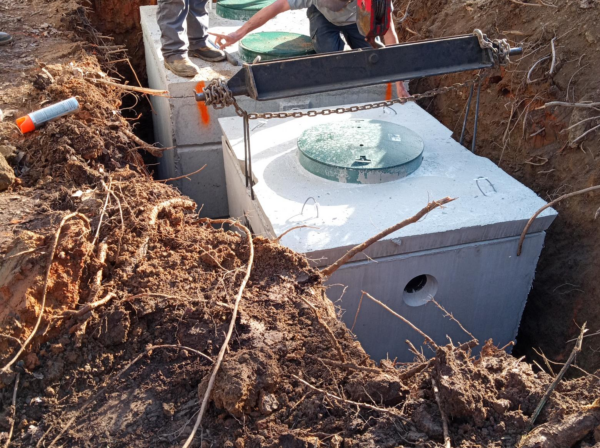Wastewater Maintenance: Drawdown Pump Test

How do you respond when your car reminds you it is time for a check-up? Or when your calendar sends a reminder that it is time for a doctor’s appointment or teeth cleaning? Nearly everything, from our bodies to our appliances, requires maintenance to survive without breakdown. Preventative care is usually less expensive than costly repairs when breakdowns occur, so performing up-front routine maintenance can save money, time, and energy.
Maintaining your community’s wastewater system will increase its sustainability, further addressing aging infrastructure, limited funding, and increased populations and demands. Failure to upkeep your system will result in system failure and create compliance issues. One of the major issues could be the effluent not meeting permit standards and, most importantly, the community’s wastewater not being treated correctly, thus creating a public health issue.
One solution to protect and maintain your community’s wastewater system involves completing a drawdown pump test at the lift station.
How to perform a Pump Drawdown Test:
1. Determine the pump rate in gallons/minute.
- What is the size of the lift station? (diameter in feet or length, width or depth)
- To find the pump design size/capacity information, look in the manual or plans of the lift station.
- What is the influent rate without the pump running?
- You should calculate the influent rate with a stopwatch, rod, or meter tape marked in feet and inches. An electronic water level meter tape is a more expensive but straightforward method of gauging depth changes. You can determine the cubic footage over a set period.
- Turn the pump off and use the rod and stopwatch to measure the water rise in a set time. This will establish the cubic feet per minute. Multiply it by 7.48 gal/ft3to compute gallons per minute influent. This is the influent rate without the pump on.
- What is the drawdown rate with only one pump running?
- Turn the pump on and analyze the drawdown in water over the same set period with the pump running. This is the drawdown rate with the pump in operation. Determine the cubic feet per minute and gallons per minute. Add the influent rate to the calculated drawdown rate to calculate the gallons per minute pump rate.
2. Determine the effectiveness of the pump.
- What is the percentage of efficiency?
- Convert the design capacity pump rate (rated capacity) to gallons per minute.
- Divide the pump rate you calculated by its rated capacity and multiply it by 100. This is the percentage of efficiency.
The following rate calculations are for a circular wet well:
Influent Flow Rate Calculation
![]()
Where D is the diameter of the well, and R is how much the water level rises (in feet) in one minute.
Initial Drawdown Rate Calculation
![]()
Where D is the diameter of the well, and F is how much the water level falls (in feet) in one minute.
Pumping Rate Correcting for Influent Flow
Pump Rate = Drawdown Rate + Influent Rate
Pump Efficiency Calculation
![]()
Performing a drawdown pump test will calculate your pump’s actual pumping flow rate and diagnose possible issues with your pumping system. Additionally, this test will determine if your lift station(s) are functioning efficiently. It is best practice to examine wastewater pumps at least twice yearly to expose operating conditions changes.
Safety Warning:
Disconnect and lock out the power before servicing equipment. Review the manual to be aware of any safety guidelines before starting.
This article was funded under RCAP’s EPA Treatment Works 2022 – 2023 grant.



